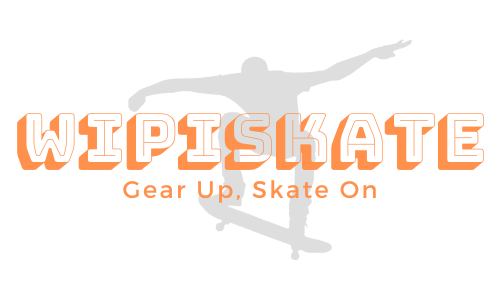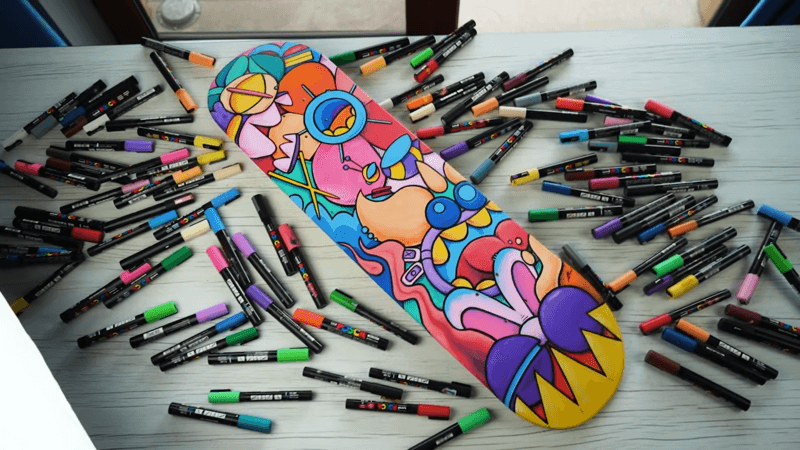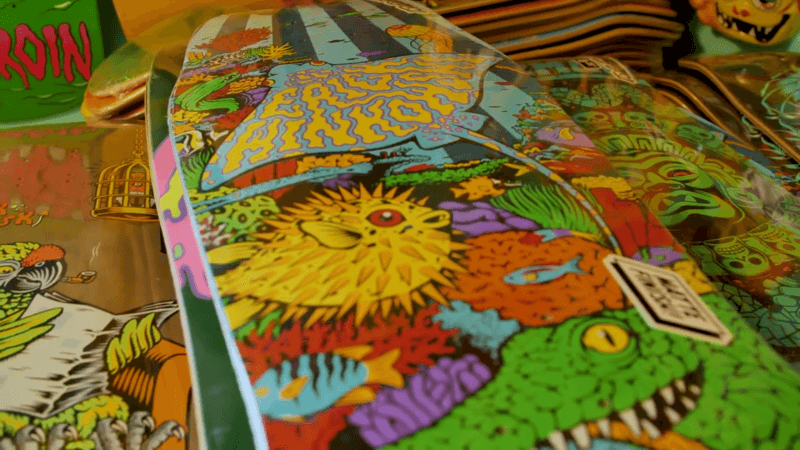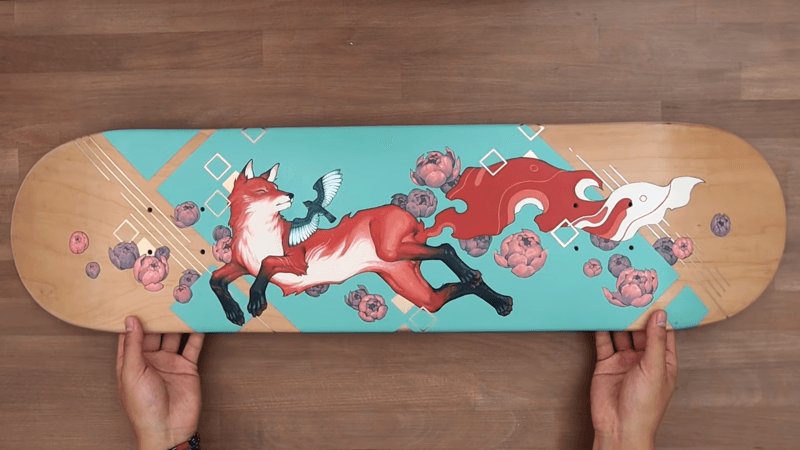No products in the cart.
Blog
The Benefits of Using Custom Shaped Skateboard Decks
Custom shaped skateboard decks represent a vibrant departure from the conventional pop-sicle shaped boards that dominate the skateboarding scene. These uniquely crafted decks offer riders a canvas for personal expression and performance enhancement, ranging from asymmetrical designs to innovative shapes reminiscent of surfboards. In this blog, we delve into the world of custom shaped skateboard decks, exploring their design diversity, material innovations, and the unique advantages they bring to skateboarders seeking both style and functionality.
What are Custom Shaped Skateboard Decks?
Custom shaped skateboard decks are uniquely designed boards that break away from the standard popsicle shape of traditional skateboards. These decks can come in a variety of forms, ranging from asymmetrical shapes to designs that mimic surfboards, and even innovative, avant-garde creations that defy conventional norms. Each custom shaped deck is crafted to cater to specific riding styles, aesthetic preferences, or functional needs, providing a personalized touch to the rider’s experience.

Differences Between Custom Shaped Decks and Traditional Skateboard Decks
The primary difference between custom shaped decks and traditional skateboard decks lies in their form and function:
- Shape and Size: Traditional skateboard decks typically have a symmetrical popsicle shape with a curved nose and tail. In contrast, custom shaped decks can have a wide range of shapes, including fishtails, cruisers, longboards, and even unique forms designed by the rider.
- Purpose: Custom shaped decks are often designed with specific riding styles in mind. For example, a deck with a wider nose and tail might be suited for pool skating, while a more elongated shape could be ideal for cruising or downhill riding.
- Aesthetic Appeal: Custom decks often feature unique graphics and designs that reflect the rider’s personality or artistic taste, making them stand out from the mass-produced designs of traditional decks.
Materials Commonly Used to Create Custom Shaped Skateboard Decks
The materials used in creating custom shaped skateboard decks are similar to those used in traditional decks, with a few variations to accommodate different shapes and functions:
- Canadian Maple: The most common material, known for its durability, flexibility, and excellent pop. Multiple layers of maple veneer are laminated together to create a strong, resilient deck.
- Bamboo: Increasingly popular for its sustainability and lightweight. Bamboo decks offer a unique flex and strength, making them ideal for specific custom designs.
- Fiberglass: Often used in combination with wood to add extra strength and reduce weight. Fiberglass layers can provide additional durability and a distinctive feel underfoot.
- Carbon Fiber: Used in high-end custom decks for its superior strength-to-weight ratio. Carbon fiber decks are incredibly light and strong, though typically more expensive.
To order your amazing personalized skateboard deck, visit wipiskate.
Benefits of Custom Shaped Skateboard Decks
Opting for a custom shaped skateboard deck comes with several advantages:
- Enhanced Performance: Custom shaped decks can be optimized for specific types of riding, improving performance in areas like speed, stability, or maneuverability.
- Innovation: Custom decks often incorporate new technologies and materials, pushing the boundaries of what a skateboard can be and do.
- Aesthetic Satisfaction: The ability to choose or create unique graphics and shapes adds an element of pride and satisfaction in the board’s appearance
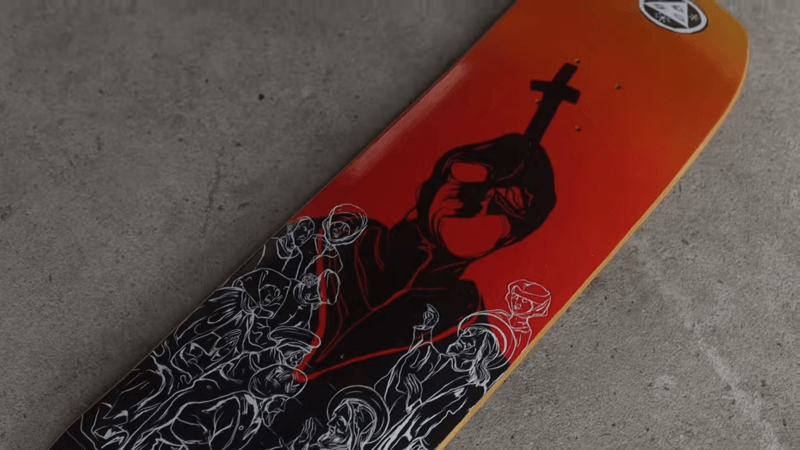
Personalization and Style
Custom shaped skateboard decks allow skaters to express their individuality and style through unique shapes and designs. These decks can feature custom graphics and artwork, making each board a personal statement. The ability to choose specific shapes—such as old school, fishtail, or asymmetrical designs—means that skaters can select a deck that not only looks unique but also complements their skating technique and aesthetic preferences. This level of personalization helps skaters stand out and enhances their overall skateboarding experience.
Comfort and Durability
Custom shaped skateboard decks are designed with the skater’s comfort in mind, offering improved foot placement and ergonomics. These designs help reduce foot fatigue and strain, especially during long skating sessions. Custom concave and kicktail configurations provide better grip and leverage, enhancing control and comfort. Additionally, custom decks often use high-quality materials like bamboo, fiberglass, or carbon fiber, which increase durability and impact resistance. This means that custom shaped decks are not only more comfortable but also more robust, providing a longer lifespan and better performance over time.
How Custom Shaped Skateboard Decks are Made
Creating a custom shaped skateboard deck involves several steps, combining traditional craftsmanship with modern techniques:
- Design: The process begins with a design phase, where the rider or designer sketches out the desired shape and features of the deck. This can be done digitally or on paper.
- Material Selection: Based on the design, appropriate materials are chosen. Canadian maple is the most common choice, but bamboo, fiberglass, and carbon fiber are also used depending on the desired properties.
- Cutting and Shaping: The chosen material is cut into the rough shape of the deck. CNC machines are often used for precision cutting, especially for intricate designs.
- Pressing and Laminating: Layers of veneer (usually maple) are glued together and placed in a press, which applies pressure to form the deck’s concave and kicktails. For decks with fiberglass or carbon fiber, these materials are layered between the veneers.
- Shaping and Sanding: Once the deck is pressed and the glue is cured, it undergoes further shaping and sanding to refine the edges and ensure a smooth finish.
- Graphics Application: The deck is then decorated with graphics. This can be done through screen printing, heat transfer, or hand painting.
- Sealing and Finishing: Finally, the deck is sealed with a protective coating to enhance durability and prevent damage from moisture.
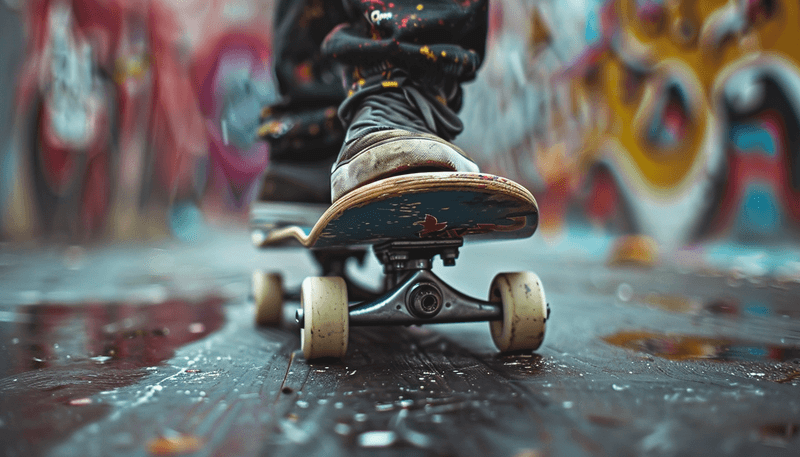
Conclusion
Custom shaped skateboard decks represent a dynamic fusion of artistry and functionality in skateboarding. Departing from the standardized popsicle shape of traditional decks, these custom creations offer riders a canvas for personal expression and performance enhancement.
I am Jasper Thorn, a man passionate about skateboarding. My heart does kickflips and ollies with the rhythm of the wheels on concrete. Every trick, every grind, and every flip tells a story of adrenaline and freedom. I’m always out there, turning every skatepark into my playground, painting it with my awesome moves.
